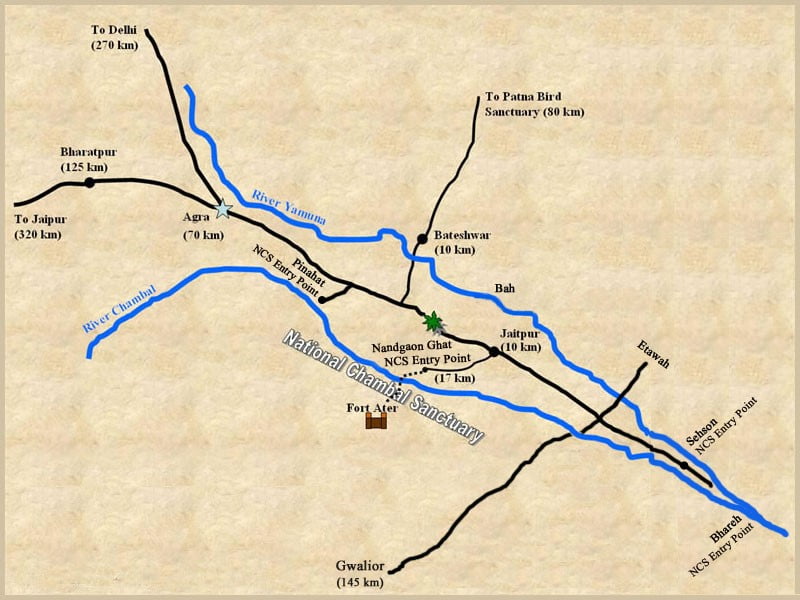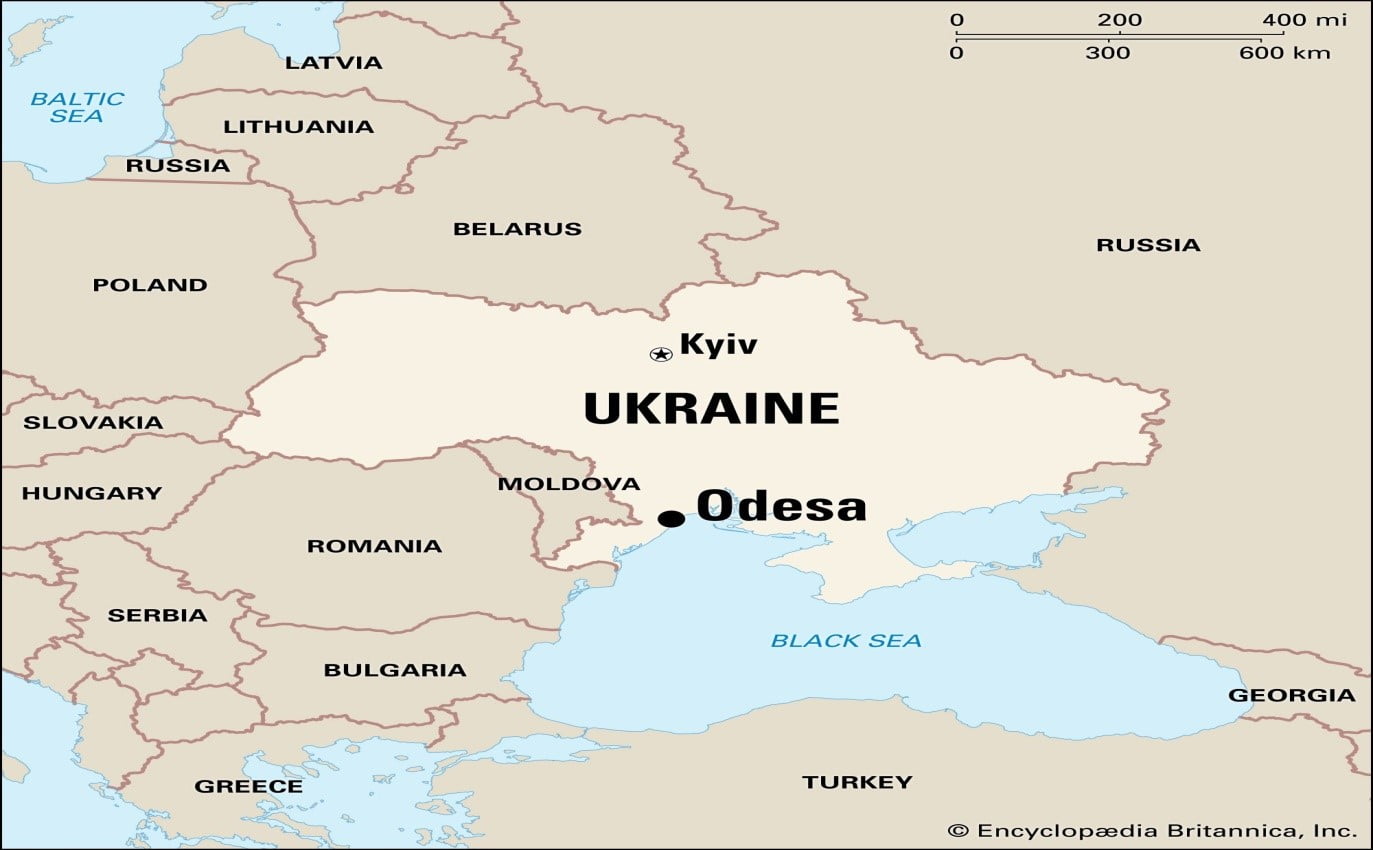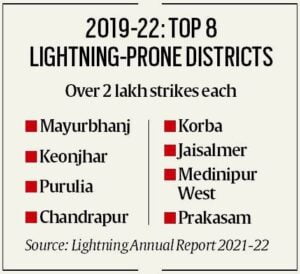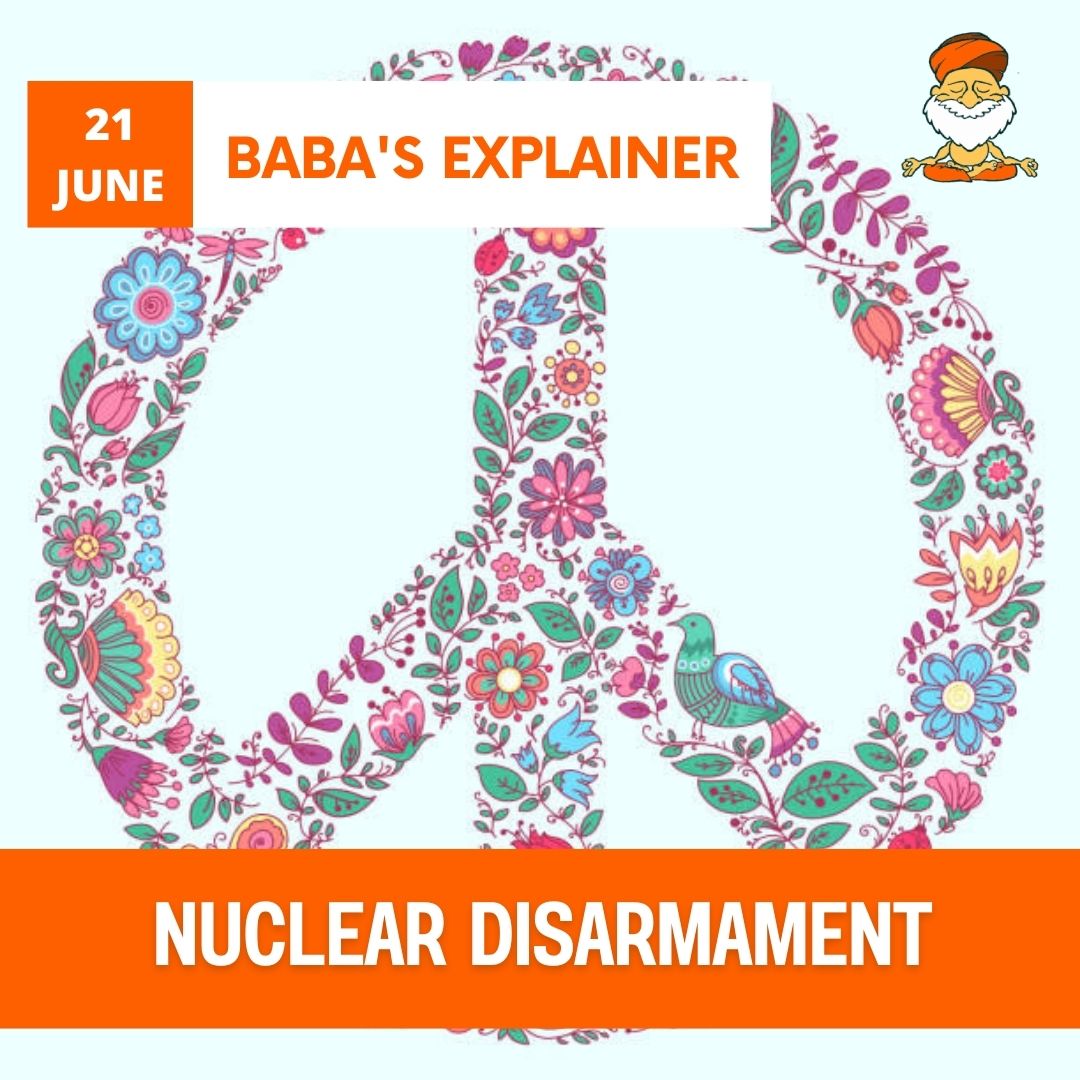IASbaba's Daily Current Affairs Analysis
Archives
(PRELIMS & MAINS Focus)
Syllabus
- Prelims – Environment
In News: To end illegal mining, Madhya Pradesh plans to make it legal in parts of Chambal sanctuary
- To free its forest department from devoting too much time, resources, and efforts in fighting illegal mining in the National Chambal Sanctuary, the Madhya Pradesh government has proposed to open 292 hectares for mining in five stretches on Chambal and its tributary Parvati rivers.
- Sand mining has been banned in the sanctuary since 2006.
- Opening up the five stretches would minimise the conflict with illegal miners, gain local support, and fetch revenue from royalty, one-fourth of which could be used to strengthen protection measures.
- Additionally, the proposal sought to make the contractors of the soon-to-be legal quarries responsible for checking illegal mining on adjacent sanctuary land four times their leased areas, failing which their leases would be terminated.
National Chambal sanctuary
- The National Chambal Sanctuary was set up in 1979 as a riverine sanctuary along an approximately 425 km length of the Chambal River and its ravines stretching over 2-6 km wide along the river.
- National Chambal Sanctuary is the main area for the species reintroduction programmme of the crocodilian species Gavialis gangeticus (Gharial)
- National Chambal Sanctuary is lying in three states of Madhya Pradesh, Uttar Pradesh and Rajasthan.
- Chambal supports the largest population of Gharials in the wild
- One of the few places to spot the Platanista gangetica – Gangetic Dolphins.
- Chambal is one of the cleanest rivers in the country.
- The National Chambal Sanctuary is listed as an important bird area
- Chambal supports more than 320 resident and migrant birds.

Source: Indian Express
Previous Year Question
Q.1) With reference to India’s Desert National Park, which of the following statements are correct? (2019)
- It is spread over two districts.
- There is no human habitation inside the Park.
- It is one of the natural habitats of Great Indian Bustard.
Select the correct answer using the code given below:
- 1 and 2 only
- 2 and 3 only
- 1 and 3 only
- 1, 2 and 3
Q.2) If you want to see gharials in their natural habitat, which one of the following is the best place to visit? (2017)
- Bhitarkanika Mangroves
- Chambal River
- Pulicat Lake
- Deepor Bed
Syllabus
- Prelims – Geography (places in news)
- Russian forces captured territory along a frontline river in eastern Ukraine
- Moscow’s separatist proxies claimed to have captured Toshkivka, a town on the mostly Ukrainian-held western bank of the Siverskyi Donets River, south of Sievierodonetsk, which has become the main battlefield city in recent weeks.
- In Odesa, Ukraine’s biggest Black Sea port, a food warehouse was destroyed in a Russian missile attack.

Source: Financial Post
Previous Year Questions
Q.1) Consider the following pairs: (2022)
Regions in News Country
- Anatolia – Turkey
- Amhara – Ethiopia
- Cabo Delgado – Spain
- Catalonia – Italy
How many pairs given above are correctly matched?
- Only one pair
- Only two pairs
- Only three pairs
- All four pairs
Q.2) Consider the following pairs: (2018)
Regions sometimes mentioned in news Country
- Catalonia — Spain
- Crimea — Hungary
- Mindanao — Philippines
- Oromia — Nigeria
Which of the pairs given above are correctly matched?
- 1, 2 and 3
- 3 and 4 only
- 1 and 3 only
- 2 and 4 only
Syllabus
- Prelims – Geography
- Mains – GS 1 (Geography)
Context: Several deaths are being reported due to lightning across India
- Seventeen people have been killed by lightning over the last two days in various parts of Bihar
- Of all the atmospheric phenomena, lightning perhaps is the most dangerous and mysterious.
- In India, lightning kills about 2,000-2,500 people every year.
What is lightning?
- Scientifically, lightning is a rapid and massive discharge of electricity in the atmosphere some of which is directed towards earth.
- The discharges are generated in giant moisture-bearing clouds that are 10-12 km tall.
- The base of these clouds typically lies within 1-2 km of the Earth’s surface, while the top is 12-13 km away.
- Temperatures in the top of these clouds are in the range of –35° to –45°C.
- As water vapour moves upward in the cloud, the falling temperature causes it to condense.
- As they move to temperatures below 0°C, the water droplets change into small ice crystals.
- They continue to move up, gathering mass until they are so heavy that they start to fall to Earth.
- This leads to a system in which, simultaneously, smaller ice crystals are moving up and bigger crystals are coming down.
- Collisions follow and trigger the release of electrons, a process that is very similar to the generation of sparks of electricity.
- As the moving free electrons cause more collisions and more electrons, a chain reaction ensues.
- This process results in a situation in which the top layer of the cloud gets positively charged, while the middle layer is negatively charged.
- The electrical potential difference between the two layers is huge, of the order of a billion to 10 billion volts.
- In very little time, a massive current, of the order of 100,000 to a million amperes, starts to flow between the layers.
- While the Earth is a good conductor of electricity, it is electrically neutral.
- However, in comparison to the middle layer of the cloud, it becomes positively charged.
- As a result, about 15%-20% of the current gets directed towards the Earth as well.
- It is this flow of current that results in damage to life and property on Earth.
- Direct lightning strikes are rare but even indirect strikes are fatal given the immense amount of charge involved.
Which areas are lightning-prone?
- A recently released annual report on lightning by the Climate Resilient Observing Systems Promotion Council (CROPC), which works closely with government agencies like the India Meteorological Department, includes a lightning atlas which maps vulnerability at the district level.
- According to the report, Madhya Pradesh has reported the largest number of cloud to ground lighting strikes, followed by Chhatisgarh, Maharashtra, Odisha and West Bengal.
- Other states with high strike rate include Bihar, UP, Karnataka, Jharkhand and Tamil Nadu
- In 2019-20, about 1.4 crore lightning strikes were recorded, which increased to 1.85 crore in 2020-21.
- In 2021-22, about 1.49 crore strikes were recorded across the country.
- The reduction, in line with the trend observed globally, has been attributed to the impact of the Covid-19 pandemic.
- The reason attributed to reduction in lightning is due to Covid-2019 pandemic induced reduction in aerosol level, pollution, environmental upgradation and relatively stable weather system in Indian subcontinent

How can the effects of lightning strikes be mitigated?
- Lightning is not classified as a natural disaster in India.
- But recent efforts have resulted in the setting up of an early warning system that is already saving many lives.
- More than 96% of lightning deaths happen in rural areas.
- As such, most of the mitigation and public awareness programmes need to focus on these communities.
- Lightning protection devices are fairly unsophisticated and low-cost. Yet, their deployment in the rural areas, as of now, is extremely low.
- States are being encouraged to prepare and implement lightning action plans, on the lines of heat action plans.
Source: Indian Express
Previous Year Question
Q.1) During the thunderstorm, the thunder in the skies is produced by the (2013)
- meeting of cumulonimbus clouds in the sky
- lightning that separates the nimbus clouds
- violent upward movement of air and water particles
Select the correct answer using the codes given below.
- 1 only
- 2 and 3
- 1 and 3
- None of the above produces the thunder
Syllabus
- Prelims – Environment
- Mains – GS 3 (Environment)
Context: The Centre has defined a list of single-use plastic items that will be banned from July 1.
What is single-use plastic?
- It refers to plastic items that are used once and discarded.
- Single-use plastic has among the highest shares of plastic manufactured and used — from packaging of items, to bottles, polythene bags, face masks, coffee cups, cling film, trash bags, food packaging etc.
Stats
- Single-use plastics account for a third of all plastic produced globally, with 98% manufactured from fossil fuels.
- Single-use plastic also accounts for the majority of plastic discarded – 130 million metric tonnes globally in 2019
- On the current trajectory of production, it has been projected that single-use plastic could account for 5-10% of greenhouse gas emissions by 2050.
- India features in the top 100 countries of single-use plastic waste generation – at rank 94
What are the items being banned?
- The items on which the Central Pollution Control Board (CPCB) have announced a ban are earbuds; balloon sticks; candy and ice-cream sticks; cutlery items including plates, cups, glasses, forks, spoons, knives, trays; sweet boxes; invitation cards; cigarette packs; PVC banners measuring under 100 microns; and polystyrene for decoration.
- Polythene bags under 75 microns is already under ban
Why these items?
- The chosen items are difficult to collect for recycling, unlike the much larger items
How will the ban be enforced?
- The ban will be monitored by the CPCB from the Centre, and by the State Pollution Control Boards (SPCBs) that will report to the Centre regularly.
- Those found violating the ban can be penalised under the Environment Protection Act 1986 – which allows for imprisonment up to 5 years, or a penalty up to Rs 1 lakh, or both.
How are other countries dealing with single-use plastic?
- Earlier this year, 124 countries, parties to the United Nations Environment Assembly, including India, signed a resolution to draw up an agreement which will in the future make it legally binding for the signatories to address the full life of plastics from production to disposal, to end plastic pollution.
- Bangladesh became the first country to ban thin plastic bags in 2002.
- As of July 2019, 68 countries have plastic bag bans with varying degrees of enforcement.
Source: Indian Express
Previous Year Question
Q.1) Why is there a great concern about the ‘microbeads’ that are released into environment? (2019)
- They are considered harmful to marine ecosystems.
- They are considered to cause skin cancer in children.
- They are small enough to be absorbed by crop plants in irrigated fields.
- They are often found to be used as food adulterants.
Syllabus
- Prelims – Current Affairs
In News: A study by the Reserve Bank of India (RBI) has spoken about the possibility of capital outflows to the tune of $100 billion (around Rs 7,80,000 crore) from India in case of a major global risk scenario or a “black swan” event.
What is a ‘black swan’ event?
- A black swan is a rare, unpredictable event that comes as a surprise and has a significant impact on society or the world.
- These events are said to have three distinguishing characteristics – they are extremely rare and outside the realm of regular expectations; they have a severe impact after they hit; and they seem probable in hindsight when plausible explanations appear.
When did the term originate?
- The black swan theory was put forward by author and investor Nassim Nicholas Taleb in 2001, and later popularised in his 2007 book – The Black Swan: The Impact of the Highly Improbable.
- The term itself is linked to the discovery of black swans.
- Europeans believed all swans to be white until 1697, when a Dutch explorer spotted the first black swan in Australia.
- The metaphor ‘black swan event’ is derived from this unprecedented spotting from the 17th century, and how it upended the West’s understanding of swans.
When have such events occurred in the past?
- Taleb’s book predated the 2008 global financial crisis – a black swan event triggered by a sudden crash in the booming housing market in the US.
- The fall of the Soviet Union, the terrorist attack in the US on September 11, 2001, also fall in the same category
Is the Covid-19 pandemic a black swan event?
- The author called it a “white swan”, arguing that it was predictable, and there was no excuse for companies and governments not to be prepared for something like this.
Source: Indian Express
Previous Year Question
Q.1) Which one of the following best describes the term “greenwashing:”? (2022)
- Conveying a false impression that a company’s products are eco-friendly and environmentally sound
- Non-Inclusion of ecological/ environmental costs in the Annual Financial Statements of a country
- Ignoring the disastrous ecological consequences while undertaking infrastructure development
- Making mandatory provisions for environmental costs in a government project/programme
Baba’s Explainer – Fragile State of Nuclear Disarmament

Syllabus
- GS-2: Important International institutions, agencies and fora- their structure, mandate.
- GS-3: Security
Context: Recently, Stockholm International Peace Research Institute (SIPRI) released its yearbook a few days back highlighting some worrying trends of the past year in international security.
- The expected rise of the global nuclear arsenal was the chief cause of concern among SIPRI experts.
- The comprehensive report claims that while absolute numbers of nuclear arsenal have reduced, they are expected to grow over the next decade.
Read Complete Details on Fragile State of Nuclear Disarmament
Daily Practice MCQs
Q.1) Consider the following statements
- National Chambal Sanctuary is lying in three states of Madhya Pradesh, Uttar Pradesh and Maharashtra
- Gangetic Dolphins, the national Aquatic animal can be spotted in National Chambal Sacntuary
- National Chambal Sanctuary is the main area for the species reintroduction programmme of Gharial
Choose the correct statements:
- 2 and 3
- 1, 2 and 3
- 3 only
- 1 only
Q.2) Port of Odesa recently seen in news is loacted in?
- Ethiopia
- Romania
- Ukraine
- Israel
Q.3) The term Black Swan Event recently seen in news, means?
- It is used to describe a potentially very significant event whose possible occurrence may be predicted beforehand but whose probability is considered small.
- A rare, unpredictable event that comes as a surprise and has a significant impact on society or the world.
- It is a highly obvious yet ignored threat.
- A question, problem or controversial issue which is obvious to everyone who knows about the situation, but is deliberately ignored.
ANSWERS FOR 20th JUNE 2022 – Daily Practice MCQs
Q.1) - c
Q.2) - d
Q.3) - c











